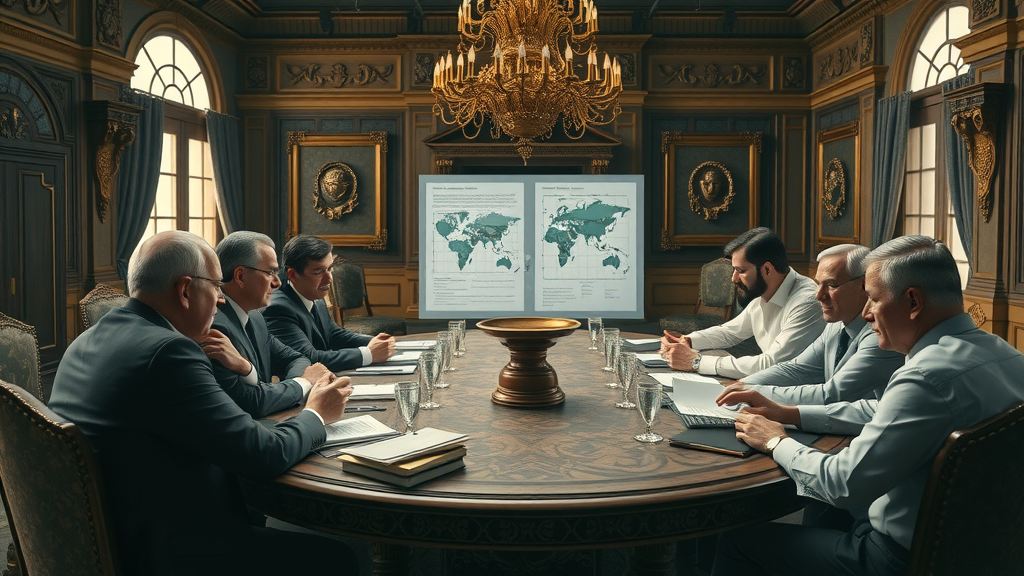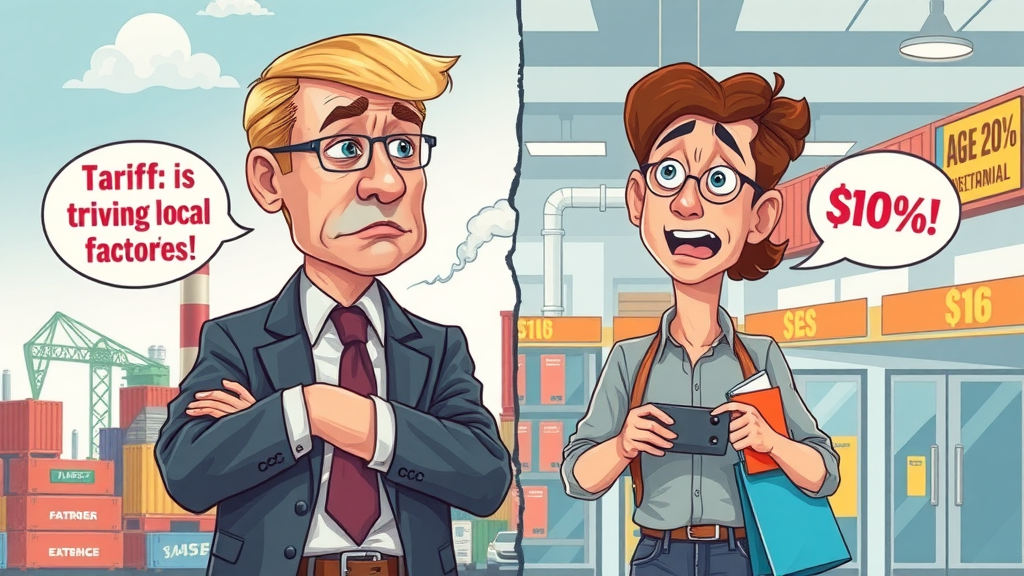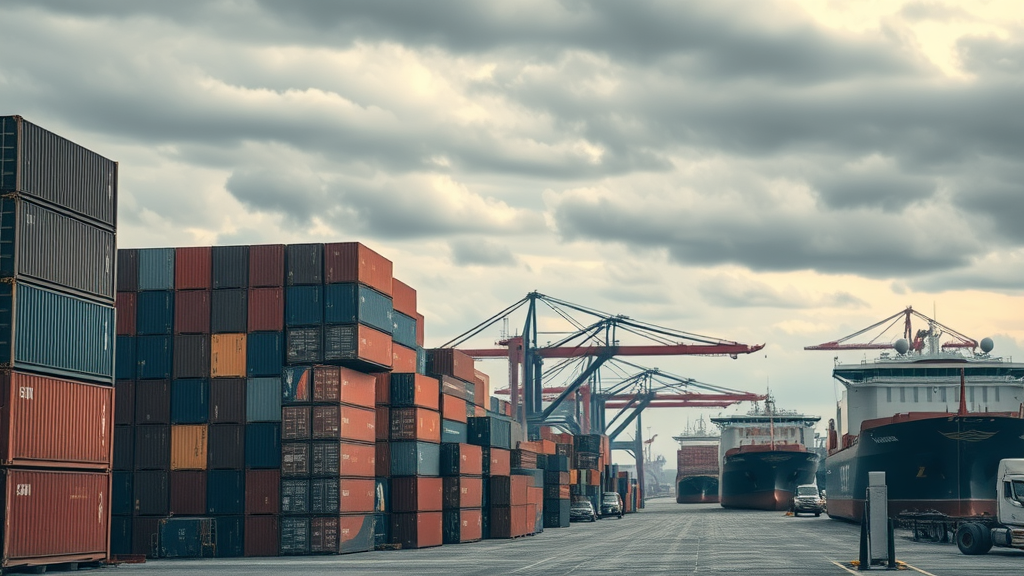Did you know that a single percentage point increase in import tariffs can shift billions of dollars in global trade flows overnight? As international policies tighten and trade wars flare, businesses are bracing for higher tariffs that impact everything from product pricing to supplier relationships. Whether you’re an importer, exporter, or simply invested in global commerce, harnessing the right strategies can be the deciding factor between thriving—or just surviving—in a tariff-heavy landscape.

Revealing the Real Cost: How Import Tariffs Shape Global Trade
Import tariffs are more than just extra charges at the border—they reshape entire industries and economies. According to recent data, over $400 billion in global trade was directly affected by tariff adjustments in just the past year. These shifts not only raise higher prices for imported goods but also influence which companies—and countries—emerge as winners or losers. As supply chains evolve and trade policies change, the impact of tariffs is felt by consumers, manufacturers, and governments alike.
For example, when the United States doubled down on tariff rate increases under the Trump administration , some businesses quickly sought new suppliers abroad, while others absorbed the costs and passed increases on to buyers. Workers, too, experienced the ripple effects as industries adjusted their operations. Understanding how customs duties and high import tariffs operate globally helps organizations pinpoint risks and seize new market opportunities—crucial in today’s interconnected world .
- Learn why import tariffs matter in today's interconnected world, illustrated by a surprising recent statistic on global tariff impacts.

What Are Import Tariffs and Why Do They Matter?
At its core, an import tariff is a government-imposed tax on goods and services entering a country. Tariffs are used to regulate trade by making imported products more expensive, which can either protect domestic industries or help governments raise revenue. When countries like the United States impose high tariffs on certain products, it can lead to a cascading set of consequences for consumers and producers around the globe.
Understanding these trade barriers is crucial because they directly influence your bottom line, supply chain flexibility, and ability to compete in international markets. Tariffs aren’t only about economics—they’re a tool of trade policy, impacting the trade deficit , diplomatic relationships, and sometimes even national security. In a world marked by shifting alliances and complex trade agreements , knowing how tariffs function is a must for anyone engaged in importing or exporting.
Defining Import Tariffs: Top Examples and Key Terms
An import tariff —sometimes called a customs duty—is usually set as a percent tariff based on the value or quantity of imported goods. For instance, the Trump admin imposed tariffs on Chinese goods and services to counter perceived unfair trading practices and support local manufacturers. A common example includes the united states levying customs duties on foreign steel to protect its domestic producers. Other types include specific tariffs (fixed fees per unit) and ad valorem tariffs (a set percentage of the item’s value).
Crucial terms to know:
- Tariff schedule: The official list outlining products and their applicable tariffs.
- Customs duties: Another term for import tariffs, collected at the border.
- Goods and services: The imported products subject to tariffs.

Understanding the Tariff Schedule and Tariff Rate Systems
Every country maintains a tariff schedule that details the duty or tax rates for each imported good . These schedules can be exceedingly complex, ranging from low tariffs on essential commodities to high tariffs on protected or sensitive products. For example, the tariff rate for automobiles imported into the United States is historically higher than that for raw materials. This structure enables governments to strategically encourage or discourage the import of certain goods depending on economic or political priorities.
There are generally two systems in use: a single rate system , where one standard rate applies, and a multiple rate system , which differentiates by product type or origin country. The exact tariff rate a business faces is laid out in the country’s official tariff schedule . Understanding how these systems work—and when changes might arise—is essential for accurate cost forecasting, budgeting, and contract negotiation.
| Country | Automobiles | Steel | Agriculture | Consumer Electronics |
|---|---|---|---|---|
| United States | 2.5% - 25% | 25% | 5% - 10% | 0% - 3% |
| European Union | 10% | 10% - 15% | 0% - 8% | 0% - 2% |
| China | 15% - 25% | 18% | 10% - 20% | 8% - 15% |
Leading economist explains: "Import tariffs can drastically alter the dynamics of international trade, shaping winners and losers in the global market."

How the United States Uses Import Tariffs: Policy, Politics, and Impact
In the united states , import tariffs have played a pivotal role in shaping economic outcomes and foreign policy for centuries. More recently, their use has accelerated due to shifting global alliances and mounting trade deficits . Polices enacted under the Trump administration brought high-profile tariff schedules back to the forefront of economic discussions, often targeting specific industries and countries. These moves have immediate impacts on domestic product prices, international partnerships, and the day-to-day decisions faced by American businesses.
Importantly, these strategic tariff adjustments are rarely made in isolation—they often prompt retaliatory tariffs and contribute to complex, ongoing negotiations with partners like the European Union and China. Tracking how these shifts play out helps businesses anticipate cost spikes and supply chain delays, especially as new free trade agreements and policy adjustments are debated.
The Evolution of Import Tariffs Under President Trump
President Trump radically altered the U.S. approach to tariffs, particularly targeting products from China and other leading trade partners. The trump admin justified these actions as tools for defending national security and reducing the widening trade deficit . The administration's strategy often involved the abrupt imposition of higher tariffs , such as the broad-based tariff on all imports from China in 2018, which set off a global chain reaction of competitive, retaliatory measures.
These tariffs covered sectors from electronics to agriculture, but the highest-impact moves focused on industrial goods like steel and aluminum . The resulting uncertainty forced many businesses to revisit their sourcing decisions while forcing global partners to the negotiating table. The legacy of these interventions continues to influence U.S. policy discussions and supply chain planning for imports today.
Case Study: Steel and Aluminum Tariffs and Their Ripple Effects
In 2018, the United States imposed sweeping tariffs on steel and aluminum , citing both economic interests and threats to national security . These tariffs, in some cases as high as 25% for steel and 10% for aluminum, had immediate effects: raising input costs for American manufacturers, prompting retaliatory tariffs from major trading partners, and increasing higher prices for consumers on any imported good with metal content.
Downstream effects included higher tariffs on U.S. agricultural exports imposed by China and the European Union in response. As a result, domestic producers faced greater challenges, while global competitors sometimes gained ground. This case demonstrates not only the direct expense brought on by import tariffs but also their wide-reaching impact on economic relationships and market stability.

Trade Deficit and the Influence of Import Tariffs
One of the main arguments for imposing import tariffs is to shrink the national trade deficit —the gap between the value of what a country imports and what it exports. Supporters of tariffs, like President Donald Trump , claim that sharply increasing customs duties can protect local industries and boost domestic product output.
However, opponents argue that high tariffs can actually exacerbate trade imbalances. This happens when trading partners respond in kind, restricting access to lucrative export markets. The relationship between tariff rate changes and the broader trade deficit remains a fiercely debated issue, with outcomes often hinging on the specifics of each trade policy and the strength of global demand for domestically produced goods.
Import Tariffs vs. Trade Agreements: Key Differences and Strategic Opportunities
Unlike import tariffs , which act as barriers to entry, trade agreements are designed to lower or eliminate such barriers between member countries. The choice between imposing a high tariff and negotiating a new trade agreement can reshape entire industries. While tariffs tend to protect domestic markets in the short term, free trade agreements foster long-term international cooperation, access to new markets, and more competitive pricing for consumers.
Understanding how these options interact—and how you can leverage them—is critical. For instance, if the European Union strikes a new agreement with the United States, businesses operating in those countries may benefit from far lower tariffs on their exports and imports, increasing profitability and market reach. Being proactive in strategy and staying aware of upcoming negotiations ensures businesses gain every possible advantage during policy changes.
Retaliatory Tariffs: The Global Domino Effect
Retaliatory tariffs occur when one country responds to another’s tariff increase by imposing its own. This can quickly spiral, resulting in a global trade standoff. When the U.S. implemented high tariffs on Chinese goods under the trump admin , China responded in kind, targeting American products such as soybeans and automobiles. The effects reverberated beyond these two countries, influencing supply chain costs and global pricing structures.
For businesses, these retaliatory tariffs present a substantial risk. They cause unpredictability in supply chain planning and can make long-term contracts difficult to enforce. Minimizing exposure—through diversification, strategic sourcing, and contract renegotiation—is now more vital than ever to stay competitive.
The Role of the European Union in Tariff Negotiations
The European Union remains a global powerbroker in tariff discussions. As one of the largest trading blocs, its unified negotiating position helps to secure low tariff access for European producers around the world. The EU’s ability to broker group deals gives its member states leverage in talks with countries like the United States and China.
Businesses operating within or trading with the EU should closely watch tariff negotiations, as newly ratified trade agreements and changing tariff schedules can significantly impact bottom lines. Companies that take a proactive role in compliance and supply chain adaptation are best equipped to weather the volatility of evolving international trade policy .
- USMCA (United States–Mexico–Canada Agreement) lowered tariffs on auto and dairy trade in North America.
- EU–Japan Economic Partnership reduced tariffs for both regions on industrial and agricultural goods.
- Regional Comprehensive Economic Partnership (RCEP) in Asia-Pacific eliminated many intra-bloc tariffs, fostering regional supply chain growth.

Smart Strategies for Businesses to Beat High Import Tariffs
With high import tariffs a looming challenge, savvy companies must adopt strategic approaches to remain profitable. This includes regularly reviewing the tariff schedule to forecast future cost increases, as well as seeking new supplier relationships to diversify goods and services sourcing. Reshoring—bringing production closer to home—can also help, especially when weighed against volatile international rates and risk of retaliatory tariffs .
Customs compliance is another critical point. Accurate classification under the tariff rate system ensures businesses avoid excessive or unexpected charges. Finally, ongoing participation in discussions about pending trade agreements or changes to customs duties empowers companies to advocate for beneficial policy.
Sourcing, Reshoring, and Diversification: Proven Tactics
Sourcing diversification and reshoring are two time-tested tactics for sidestepping the financial shock of sudden tariff rate increases. By expanding your network of suppliers and considering new geographic regions, you can reduce reliance on any single country or market. This spreads exposure across lower-risk areas and can even give you leverage when negotiating price or contract terms.
Businesses are also increasingly investing in nearshoring—shifting production to neighboring countries with low tariffs and favorable trade ties. This strategy often comes with added benefits, such as shorter lead times and improved quality oversight. Coupled with rigorous supply chain reviews and ongoing evaluation of your tariff schedule , these approaches form the backbone of resilient global sourcing.
- Customs duties: Audit your imports regularly for compliance and potential duty reductions.
- Goods and services: Ensure correct HS code classification for all imported items.
- Tariff schedules: Stay informed on upcoming changes via official government releases or industry bulletins.
Leveraging Free Trade Agreements to Lower Costs
Free trade agreements are invaluable for businesses seeking to minimize or even eliminate import tariffs . These agreements, such as the USMCA or EU's various pacts, grant preferential tariff rates or exemptions for members. For example, qualifying products imported from Canada or Mexico into the United States may bypass standard customs duties altogether—directly boosting profit margins.
To fully benefit, companies must ensure proper documentation, meet rules of origin requirements, and maintain scrupulous records for compliance. Proactive monitoring of upcoming trade agreements can unlock sudden and significant cost savings—an edge that competitors may miss.
- Map out your entire supply chain—from raw materials to finished goods.
- Identify which items are vulnerable to high tariffs or scheduled rate increases.
- Check if suppliers are already taking advantage of free trade deals or can be moved to do so.
- Cross-reference product classifications with official tariff schedules for potential savings.
- Document compliance at every step to avoid fines and benefit from the lowest available rates.
Seasoned logistics manager notes: "Diversifying your supplier network is essential to minimizing the impact of volatile import tariffs."

Watch: Explainer: How Import Tariffs Affect Your Bottom Line
Key Points to Monitor: Tracking Import Tariff Policy Changes
Navigating import tariff strategy requires constant vigilance. Tariff schedules, trade agreements , and other trade policy shifts are regularly updated, sometimes with little warning. Top businesses rely on both government announcements and sophisticated analytics tools to anticipate or react to changes. By staying ahead, you’ll reduce the risk of paying higher tariffs or missing opportunities offered by new free trade pacts.
Proactive tracking involves more than just checking news headlines—you’ll want to subscribe to regulatory alerts, analyze official tariff databases, and establish a direct line of communication with customs consultants or in-house compliance officers. Real-time data can prevent major disruptions and uncover hidden cost-saving opportunities.
- US Customs and Border Protection: Regularly updated tariff schedules and compliance news.
- World Trade Organization (WTO): Cross-border analytics on tariff policy shifts and new agreements.
- Industry News Portals: Timely alerts when governments announce high tariffs or new trade talks.
- Customs data analytics tools (e.g., Panjiva, ImportGenius): For real-time, product-level tracking.

People Also Ask
What is an import tariff?
An import tariff is a tax or duty imposed by a country’s government on goods and services shipped from abroad. The primary goal is either to raise government revenue or protect local industries from cheaper foreign competition. Import tariffs can affect everything from consumer electronics to agricultural imports, altering the cost dynamics for both businesses and consumers.
Are import tariffs good or bad?
Import tariffs have both winners and losers—while they can safeguard domestic product and stimulate local industries, they often raise higher prices for consumers and may trigger retaliatory tariffs from affected trading partners. The ripple effects can disrupt supply chains and escalate global trade tensions. Whether tariffs are beneficial depends on the broader economic context and the sectors involved.

Who pays import taxes?
Import taxes are ultimately paid by the buyer of the goods—the importer—though these costs are frequently passed down the supply chain to distributors and consumers. When higher tariffs are in place, businesses importing goods often adjust pricing, impacting the retail prices for everyday consumers.
What is the import tax rate in the US?
The import tax rate —or tariff rate—for U.S. products varies according to the tariff schedule . While many consumer goods enter at rates as low as 0%-5%, others, like steel and aluminum , have been subject to high tariffs of up to 25%. Businesses should consult the official U.S. tariff schedule for product-specific rates.
Expert Answers: Your Top Import Tariff FAQs
Effectively managing import tariff risk hinges on good habits and reliable information. Staying current on trade policy , engaging with free trade agreements , and fostering adaptable supply chain relationships are all essential practices. Experts recommend integrating regulatory changes into regular business reviews and investing in ongoing compliance training. Never underestimate the value of expert networks—whether internal or external—in guiding your tariff mitigation strategies.
- Maintain a compliance checklist that includes updating product classifications and tariff codes regularly.
- Educate teams on every new trade agreement affecting your core product lines.
- Audit suppliers and logistics partners for resilience under changing policies.
- Invest in forecasting software to model “what-if” scenarios based on announced political or trade changes.
- Schedule routine consultations with customs attorneys or trade compliance professionals.
'Understanding and adapting to changing import tariffs can be the difference between profit and loss in international trade.'
Watch: Interview: Trade Policy Experts on Navigating US Import Tariffs
Ready to Share Your Experience on Import Tariffs?
Have insights to share on global trade? Let’s talk— call us at 203-271-7991 to explore contributing an article. Join a growing network of professionals committed to knowledge-sharing and greater business resilience.

Summary: Essential Takeaways for Navigating Import Tariffs Successfully
- Prioritize supplier diversification and robust sourcing strategies to reduce exposure to high tariffs .
- Stay vigilant by monitoring changes to the tariff schedule and trade policy updates from key government and international sources.
- Leverage free trade agreements , expert networks, and compliance tools to maintain a competitive edge in a rapidly shifting market.
To deepen your understanding of import tariffs and their implications, consider exploring the following resources:
-
What Is a Tariff and Why Are They Important? provides a comprehensive overview of tariffs, including their definitions, purposes, and effects on global trade.
-
Import Tariffs & Fees Overview and Resources offers detailed information on finding tariff rates, understanding the Harmonized System (HS) codes, and navigating the complexities of international trade regulations.
If you’re serious about mastering the intricacies of import tariffs, these resources will equip you with the knowledge to navigate and strategize effectively in the global trade environment.
 Add Row
Add Row  Add
Add 




Write A Comment